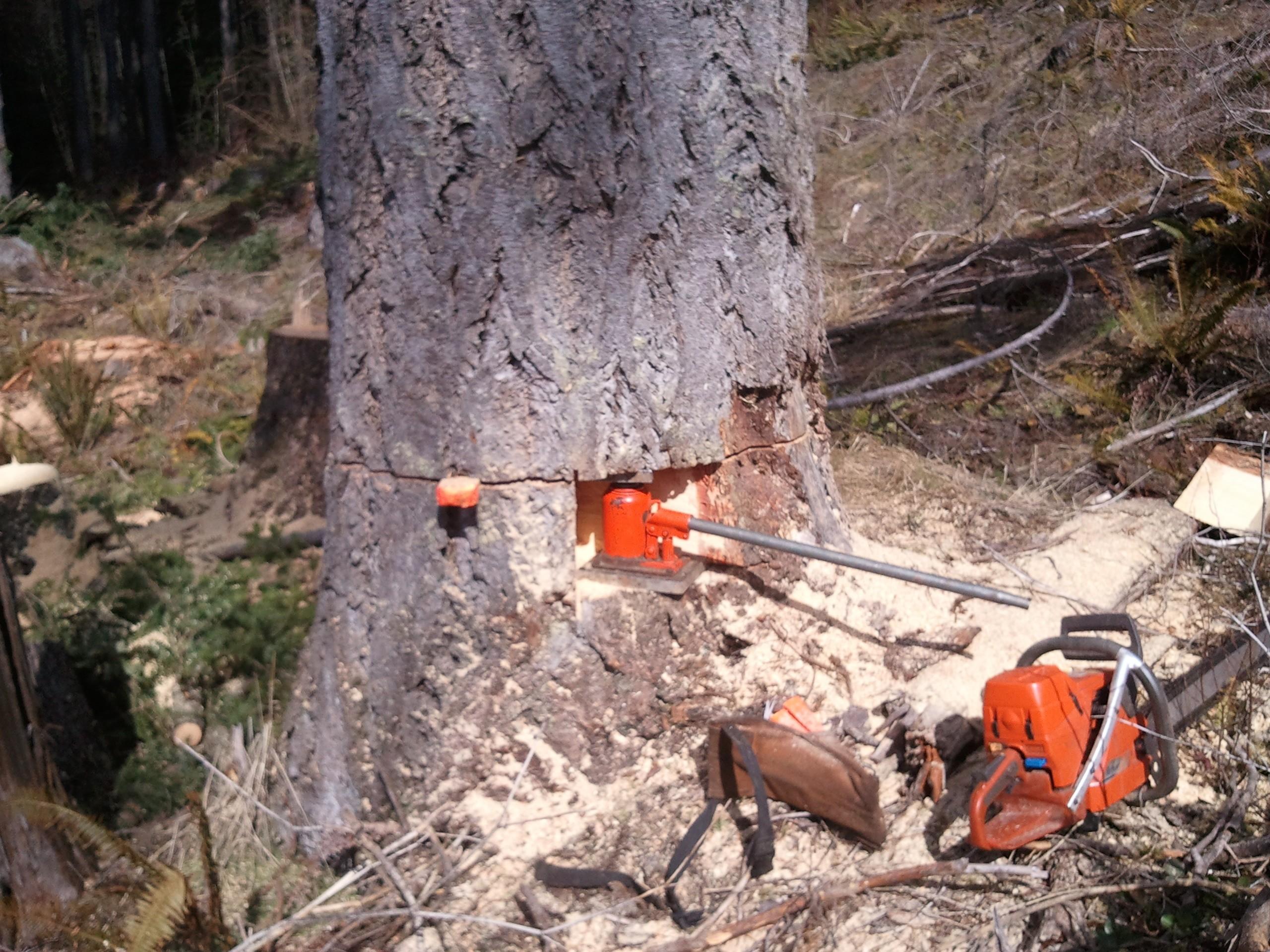How were steel wedges better than plastic wedges in that circumstance? They won't crush. Sure, you'll mushroom the head a little pounding them in. Wood wedges probably wouldn't have done the job alone because they do have extra friction (good in some circumstances, not in others).....One time I had a bad situation. A big almost dead ( bark had not slipped yet or I'd have passed) hickory tree. Due to buildings there was only 1 place to fall. At some point the saw was REMOVED from the back cut and all that held the tree up was those wood wedges. I put 2 steel wedges in the open back cut and used a sledge hammer to work them in. When the wood wedges got loose I stacked them as back up. The tree finally swung past 90% and slowly started to fall. The fall was picture perfect. Looking at that stump I saw how much load those Steel wedges had on them. Somewhere there's a photo. Two black marks with compression lines. ....
I should make more wood wedges. Sometimes I'll make one on the spot if I only have one plastic wedge with me and it isn't getting enough lift...but some intentionally made wedges from curly wood that will be less likely to split (like the elm you describe) sounds like a good plan!



























































